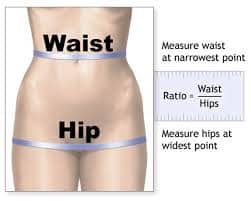Part 2 – Collecting your stats
Once you have completed the pre-assessment lifestyle questionnaire (part 1), you will be required to undertake some measurements – these are simple measurements to help us in assessing your health status these measurements are required to be completed prior to the virtual health assessment appointment.
Once you have completed these, note the results down on the My Results form and have this information available at your virtual appointment.
IMPORTANT
Below are the checks you will need to undertake prior to your virtual health assessment. Ensure you have written the data/results on to the My Results form and have this to hand to discuss with your healthcare practitioner at the time of your appointment.
- Height and weight
You may know your height already and have scales at home in which case this will only take a few seconds to complete! Don’t worry about the units – whether cm/m, feet and inches, kg or stones, note these measurements down on the form provided or where you can have these available on the day.
If you do not have scales at home, you will need to access these elsewhere, some chemists or shops, such as Boots, have these available to use which can measure height, weight and calculate BMI.
- Body mass index
If you have been able to calculate Body mass index (BMI), for example by using a machine which undertook BMI analysis during height and weight measurements, then write down the value. However, our Healthcare Practitioner will show you how to calculate BMI at your appointment and will discuss the value with you.
- Resting heart rate (pulse)
Your resting heart rate taken first thing in the morning gives an indication of your general wellness. What is normal depends on your age and fitness.
If you have a device that shows your resting heart rate or pulse, such as a fitness tracker or phone App, note the value on 3 occasions, ideally first thing in the morning or when you have been resting for at least 5 minutes, and take the average of all 3. It is ideal to do this first thing in the morning, otherwise there may be a wide parameter of values. Note all 3 measurements and write down the average on the form provided.
If you need to, you can also do this manually, as indicated below, again take 3 measurements ideally first thing in the morning or when you have been resting for at least 5 minutes and then the average – note the average value down on the form provided.
Checking resting heart rate (pulse) manually
You can find your pulse in your wrist or neck.
To find your pulse in your wrist:
- Hold out one of your hands, with your palm facing upwards
- Press the first (index) finger and middle finger of your other hand on the inside of your wrist, at the base of your thumb – don’t use your thumb as it has its own pulse
- Press your skin lightly until you can feel your pulse – if you can’t find it, try pressing a little harder or move your fingers around
To find your pulse in your neck:
- Press your first finger and middle finger to the side of your neck, just under your jaw and beside your windpipe – don’t use your thumb
- Press your skin lightly to feel your pulse – if you can’t find it, try pressing a little harder or move your fingers around
Checking your pulse
When you find your pulse, either:
- Count the number of beats you feel for 60 seconds
- Count the number for 30 seconds and multiply by 2
This gives you your heart rate – the number of times your heart beats per minute (bpm).
You can also check if your pulse is regular or irregular by feeling its rhythm for about 30 seconds. It’s very common to have occasional irregular heartbeats, such as missed beats.
- Waist and hip circumferences and calculation of waist-to-hip ratio
Both waist circumference and waist-to-hip ratio are ways to identify the ‘fatness’ around your abdomen.
You will receive a tape measure in the post so that you are able to measure your waist and hip circumferences (in centimetres).
Measuring my hip and waist circumference
Below is a guide to undertaking waist and hip measurements using the tape measure provided to you:
It may be easier if someone else takes the measurements for you, however this is not essential.
- Many individuals unconsciously react to waist measurements by breathing in the stomach; hence, a relaxed posture is best for taking waist measurements.
- Stand with feet positioned close together (just a few inches apart) and weight evenly distributed across the feet.
- Take a few deep, natural breaths and relax before the actual measurement is made
- Waist circumference should be measured at the midpoint between the bottom of the last rib and the top of the hip bone. This is usually around the ‘belly button’ or just above it.
- Hip circumference should be measured around the widest portion of the buttocks, with the tape parallel to the floor.
See image below:

- For both waist and hip measurements, the tape should be snug around the body, but not pulled so tight that it is constricting.
- If possible, it is recommended that waist measurement should be repeated twice; if the measurements are within 1 cm of one another, the average should be calculated. If the difference between the two measurements exceeds 1 cm, the two measurements should be repeated.
Note down your waist and hip measurements in centimetres on the My Results form provided.
Waist-to-hip ratio
If you wish, you can calculate your own waist-to-hip ratio simply by using the formula below, otherwise your Healthcare Practitioner will do this for you at your appointment.
Waist-to-hip ratio can be simply calculated by:
Waist circumference (in cms) ÷ hip circumference (in cms)


